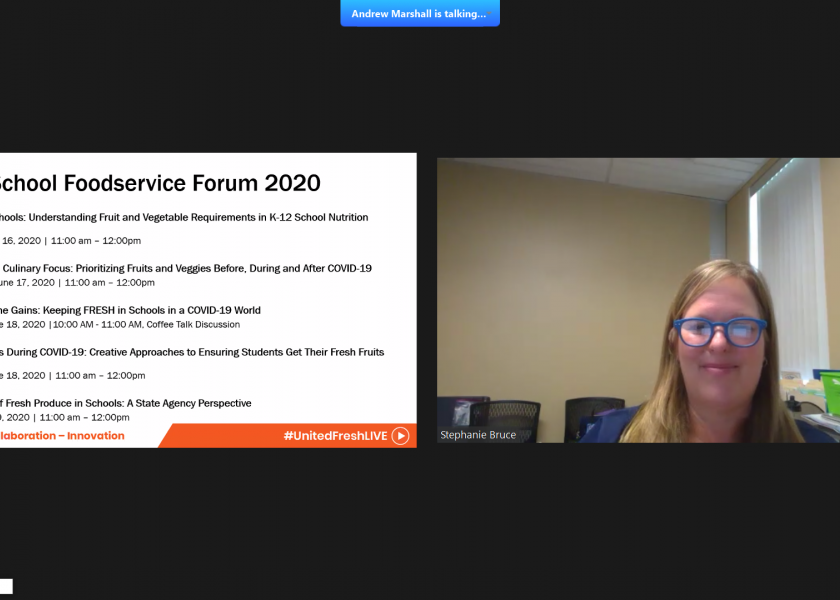COVID-19 redefines school foodservice

When COVID-19 arrived in March, the students and the salad bars in school cafeterias disappeared.
Even so, Stephanie Bruce said fresh produce is more important than ever to child feeding programs.
Bruce, director of nutrition service for California’s Palm Springs Unified School District, spoke June 15 at a virtual school foodservice workshop at United Fresh LIVE!
The Palm Springs community is heavily dependent on tourism and hospitality, and the economic toll on families has made the school feeding critical, she said. The district covers five cities and 500 square miles,
“I can walk you through any of my school sites, and I would say nine out of 10 of the students say that (the school feeding program) is the only place many of them see fresh produce, because their parents just can’t afford to buy the produce in the market,” Bruce said.
Of the 21,000 students in the district, 87% live below the poverty line. Because of the Community Eligibility Provision, all students receive free meals, she said.
The school district budget for fresh produce last year was about $700,000, she said.
“Even after COVID-19, we are still going to continue to provide as much fresh produce as we can to our students because it’s the right thing to do,” she said.
Before COVID-19, Bruce said the school district has found that its “produce bars” have been very popular, serving to increase consumption and decrease waste by allowing children to choose what they want to eat.
Unfortunately, Bruce said, produce bars won’t be offered in the next school year because of precautions related to COVID-19.
“I’m working with a software company to develop an app for our middle school or secondary students to use on their own,” she said.
The app would allow creation of a virtual salad, which the kitchen could prepare.
“We’re not sure how we’re serving it yet, if they’re coming to the cafeteria or we’re delivering it to the classroom,” she said. “But that way they can still have a choice and still order what they want.”
During the 2018-19 school year, the Palm Springs district served 4.3 million meals. For the 2019-20 school year, the district served 4.7 million meals, half of them distributed since schools were closed because of COVID-19.
COVID-19 changes everything
Palm Springs schools were closed as of March 16, but the work continued for the school foodservice staff.
“What happened here was because we are a resort town, people lost their job overnight, and the majority of our community were either furloughed, laid off, or their positions were eliminated immediately,” she said. “We had a huge responsibility to make sure that one thing they didn’t have to worry about was food for their children.”
The school foodservice staff switched to its summer foodservice mode, serving 14 school sites with curbside pickup of meals. Demand began at 10,000 meals a day but then escalated within a week to 150,000 meals.
The district then switched to a weekly plan that made available a week’s worth of breakfast and lunch meals, some of it frozen, every Wednesday.
Bruce said that the Palm Springs district has increased sourcing from local growers in recent months.
“One of the best things that can come out of a pandemic, in my opinion, is building relationships with the farmers here in the Coachella Valley,” she said. Seven years ago, Bruce was asking growers to partner with the school district but didn’t receive much interest.
When the pandemic hit, growers came to her.
“I had a farmer call me about week four (of the pandemic) and say, ’Is there any way you can take our produce?’” she said.
Grapes, peppers, melons, dates and Japanese eggplant have been purchased from growers.
“I just told them, I don’t care if it’s something that you think belongs in a school lunch; if I can afford the produce, then sell it to me and I will distribute it,” she said.
The district offered local dates in school meals for about four weeks.
“I have never had so many compliments about a produce item that I’ve ever served in my life than we did with the dates,” Bruce said. “It was a win-win for all of us.”
Related articles
United Fresh opens with everyone online
How restaurants and chef switched gears to survive







